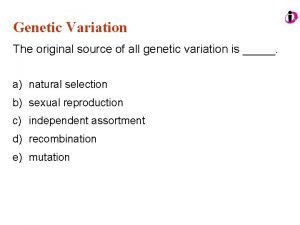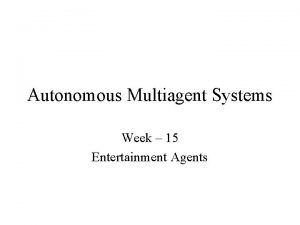Red Chillies Entertainment Page 1 Page 2 Page






















- Slides: 22

Red Chillies Entertainment Page 1

Page 2

Page 3

Indian producers lose out in the overseas market because they are unable to customize marketing strategies, unlike their Hollywood counterparts who dub their films in various Indian languages and release them in the interiors, says Shailja Gupta, US country head of production house Red Chillies Entertainment. Page 4

BUSINESS MANAGEMENT Module 2: Planning Page 5

Definition Planning is deciding in advance what is to be done in future. Plan bridges the gap between where we are and where we want to go. - Harold Koontz & O’ Donnell “ The process of establishing goals and suitable action for achieving these goals. ” - Stoner & Freeman Page 6

Meaning Planning is a primary function of corporate management. It is the bridge between current and future. It gives managers • Purpose • Objectives • Programme and • Direction towards goals It provides a framework for decision making, helps in motivating and control of standards of performance. Page 7

Essentials or Characteristics of a Good Plan According to I. F. Urwick, essentials of a good plan are: ü It should be based on a clearly-defined objective ü It should be simple ü It should be rationale and appropriate ü It should be comprehensive ü It should provide for a proper analysis and classification of actions ü It must be flexible ü It must be balanced Page 8

Essentials or Characteristics of a Good Plan ü It must use all available resources and opportunities to the utmost before creating new authorities and new resources ü It should be free from social and psychological biases of the planners as well as of subordinates üProper co-ordination between short term and long term plans Page 9

Planning Process • Awareness of opportunities and problems • Collecting and analyzing information • Determination of objectives • Determining planning premises & constraints Page 10

• Finding out alternative courses of action • Evaluation of alternatives and selection • Determining secondary plans • Securing participation of employees • Providing follow-up & future evaluation Page 11

Types of Plans Planning can be classified on the basis of: • Time • Managerial levels • Repetitiveness & • Scope Page 12

MBO Management by Objectives: Has proved successful for the management since it was replaced by the traditional ways of ‘management by domination’ it was popularized as an approach of planning by ‘Peter. F. Drucker’ in 1954 in his book “The practice of Management” There are various MBO programmes like • Management by results • Goal Management • Work planning and review These are similar in nature even though they are named differently. According to Howell, the concept of MBO has passed through different stages • MBO for performance appraisal • For integrating the individuals of the organization & • For long-range plans Page 13

Process of MBO • Preliminary setting of objectives at the top level • Clarification of goals • Setting of subordinates’ objectives • Recycling of objectives • Performance appraisal Page 14

MBE Management By Exception: A policy by which management devotes its time to investigating only those situations which actually differ from the planned results. The idea here is the management should spend time concentrating on the important items. MBE leaves minor issues to be dealt by the lower level workers. Page 15

Methods of Planning • Philosophy: Is based on the needs and problems of the society and economy of the country, it bridges the gap between company & society. • Purpose • Objectives • Strategies: Determine long term objectives of an enterprise and courses of action to achieve these goals. • Policies: Statements that guide in decision making. • Rules • Programmes: Steps taken to and resources allocated to carry out the course of action • Budget Page 16

Decision Making Meaning Decision-making is the process of choosing the best from among the alternative soultions under given circumstances. Definition “ Selection of a course of action from among alternatives, it is core of planning. ” - Harold Koontz & Heinz Weihrich “ The process of choosing a course or action from two or more alternatives” -John A Pearce & Richard B Robinson Page 17

Types of Decisions • Programmed & Non Programmed: Routine and repetitive problems and non-routine and non repetitive. • Major & Minor • Routine & Strategic: Daily decisions & certain long term decisions Page 18

• Policy & operating decisions: High level and lower level • Organizational & Personal • Individual & Group Page 19

Decision Making Process “A good decision id dependent on the recognition of the right problem” - L. Massie • Problem Awareness: It has to be observed that if a problem really exists or not. There may be perceptions which are not really problems but are just assumed to be problems. • Making the Diagnosis: If the problem is not properly diagnosed the efforts made towards solving it will be useless. The disease can be cured only if its properly diagnosed. Page 20

• Analyzing the Problem: Related information and data should be collected. This helps in getting a clear idea of the problem. Analysis should separate facts from beliefs and opinions. • Developing Alternative Solutions: The next step is to develop alternative solutions or courses of actions. The management needs to evaluate all the courses of action. Page 21

• Selecting the best solution: Select the best solution for the various alternatives developed. For this management has to consider merits and demerits of each alternative. Some criteria for selecting the best decision are economy of effort, degree of risk, time required for implementation, practicability of the solution etc, , • Converting the decision into effective action: After selecting the best solution, the management takes steps to translate the decision into action with the co-operation of the employees. It is desirable that should be associated with the decision. • Follow up decision: Sometimes it is possible that the decision taken might not be the correct one. That’s the reason a system of follow up should be introduced. This helps in correcting, modifying, the decision without waste of time. Page 22
 Red chillies entertainment
Red chillies entertainment Oilers method math
Oilers method math Red orange yellow green blue purple
Red orange yellow green blue purple Cat 1 approach lighting system
Cat 1 approach lighting system Red over red the captain is dead
Red over red the captain is dead Red orange yellow green blue purple pink brown white black
Red orange yellow green blue purple pink brown white black Tone of a red red rose
Tone of a red red rose Poetic devices table
Poetic devices table Components of genetic variation
Components of genetic variation My love is like a red rose figure of speech
My love is like a red rose figure of speech Why does a red ball look red?
Why does a red ball look red? Metaphor in stereo hearts
Metaphor in stereo hearts Bu green and yellow
Bu green and yellow Where the red fern grows vocabulary words and page numbers
Where the red fern grows vocabulary words and page numbers Where the red fern grows vocabulary words and page numbers
Where the red fern grows vocabulary words and page numbers Title in apa format
Title in apa format Sports and entertainment marketing team decision making
Sports and entertainment marketing team decision making Use of it in entertainment
Use of it in entertainment Harrah's entertainment inc
Harrah's entertainment inc Use of it in entertainment
Use of it in entertainment Sports and entertainment marketing lesson plans
Sports and entertainment marketing lesson plans Entertainment means
Entertainment means Out of home entertainment
Out of home entertainment











































